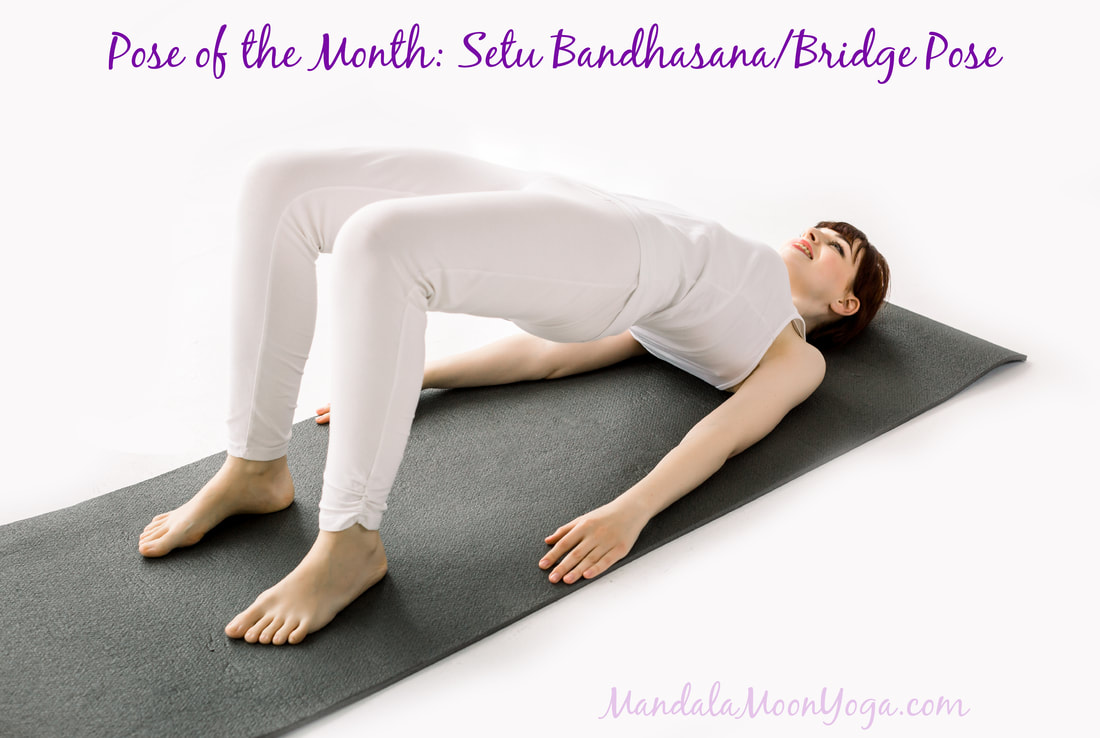Sanskrit:
setu = bridge or dam; bandha = lock; asana = pose
(SET-too bahn-DAH-sah-nah)
AKA setubhandasana, setu bhandasana, setu bandha sarvangasana
Benefits/Purpose:
This pose strengthens the legs, buttocks, back, and shoulders. It stretches the legs, hip flexors, abdomen, shoulders, and chest, and it facilitates digestion while supporting the nervous system.
Precautions:
As always, check with your healthcare provider before beginning any physical practice. If you have low back, shoulder, or neck issues or high blood pressure, try moving in and out of the pose with your breath; avoid long holdings. If you are in the third trimester of pregnancy, avoid the pose if it inhibits your breathing.
How to Practice:
- Lie on your back with your knees bent, feet flat on the floor, and arms by your sides, palms down. Feet are hip-width apart and close to your sit bones.
- Engage abdominals, thighs, and glutes. Press down with your feet to lift your pelvis off the ground. Maintain hip distance between knees.
- Relax your neck as your weight shifts toward the shoulders. Interlace your fingers under your back, and lengthen your arms.
- Draw your shoulder blades toward each other and press your hands toward your feet. Press arms and shoulders down into the ground, and press sternum up toward the sky.
- Breathe deeply into intercostals.
- To release, separate your hands and relax your shoulders. Roll the spine down one vertebra at a time.
- Extend your legs or hug the knees into the chest. Rest.
Adaptations/Variations:
- Keep arms alongside body, press arms into ground.
- Press upper arms into ground, bend elbows and point fingers to sky.
- Lift and lower hips with breath instead of holding.
- Pelvis stays low with hip joints flexed.
- Hold the sacrum with the hands.
- One leg extended - start with feet resting closer together.
- Support sacrum with hands (or block) and extend both legs (feet will be on floor)


 RSS Feed
RSS Feed